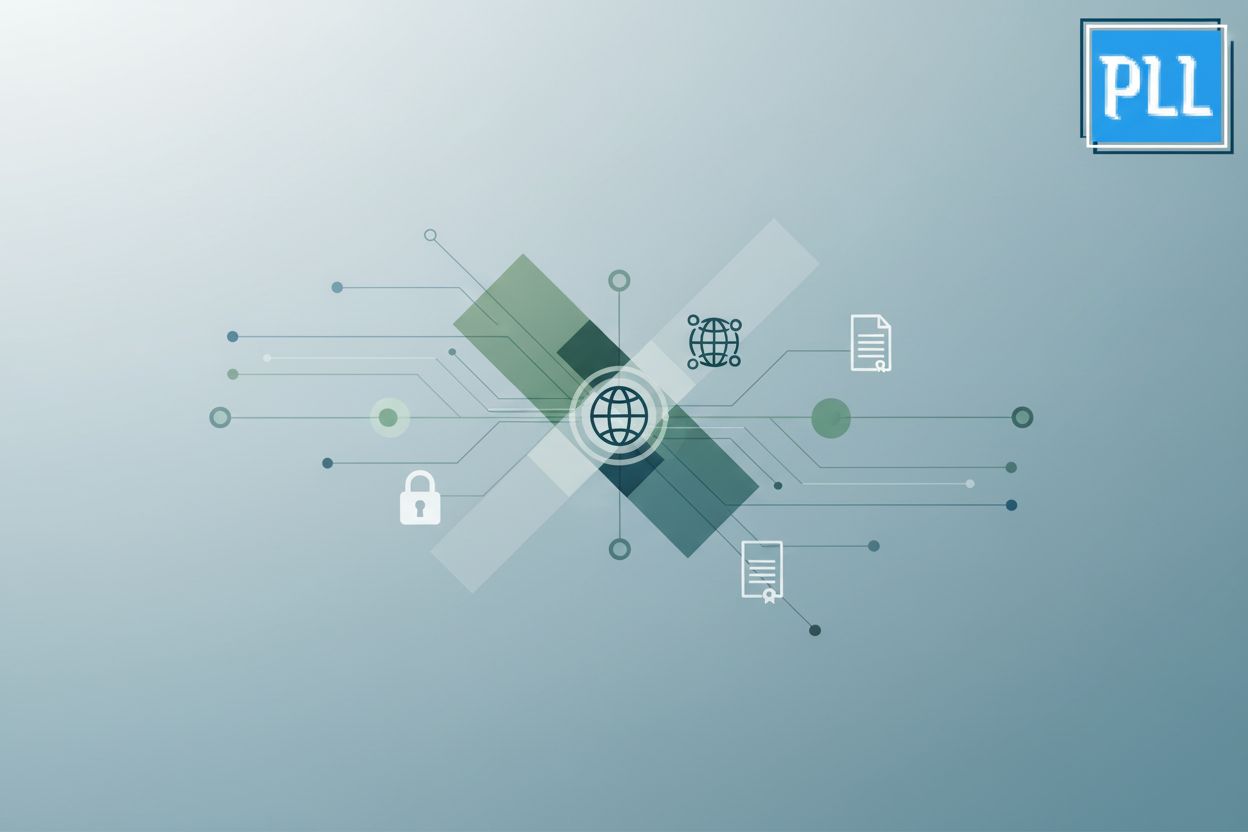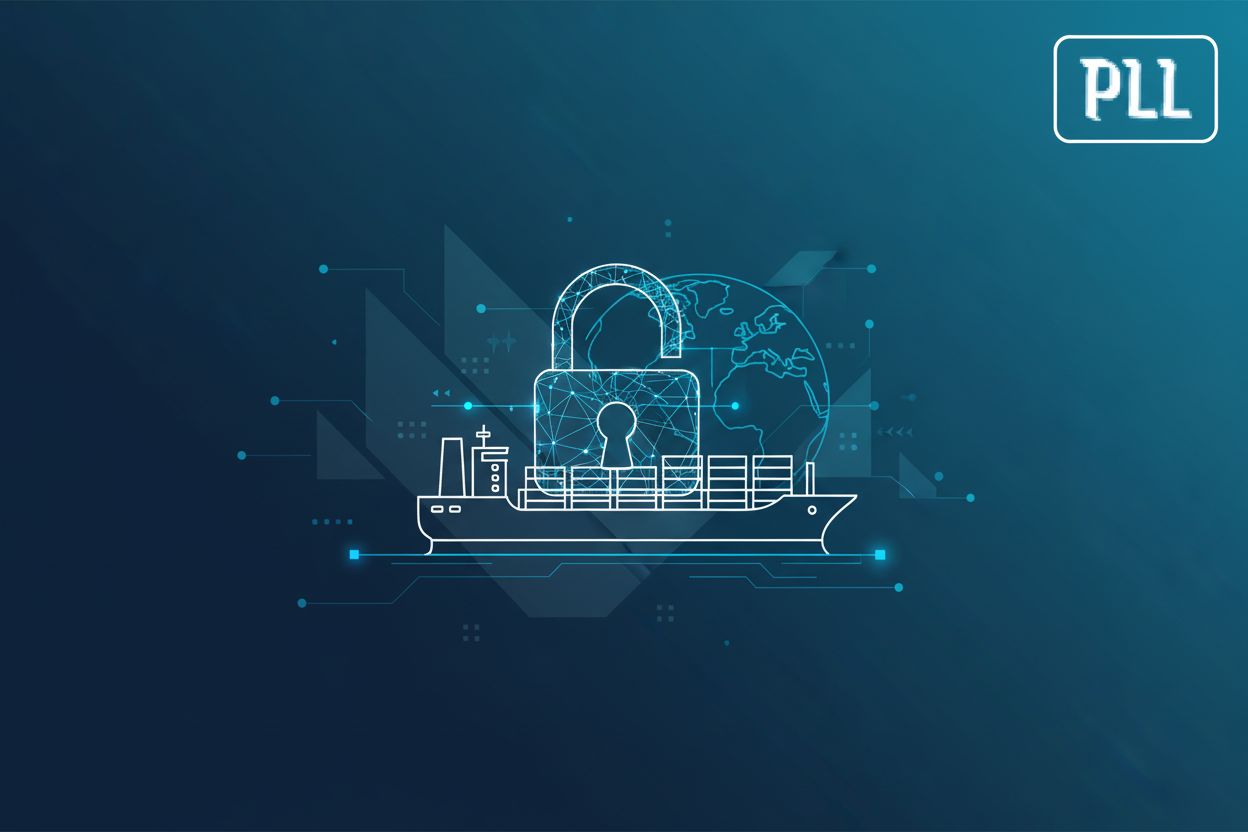Changes in Online Review Systems: What's Happening?
TL;DR
Overview of Financial Information Systems
Understanding Financial Information Systems (FIS)
Okay, let's dive into Financial Information Systems (FIS). Ever wonder how businesses keep track of all that money flowing in and out? It's definitely not just a spreadsheet anymore!
Think of a Financial Information System (FIS) as the central nervous system for a company's finances. It's the software that manages, stores, and analyzes all those crucial financial details. This includes everything from revenue and expenses to assets and liabilities.
- FIS automates tasks, like payroll and invoicing, making things way more efficient.
- It helps generate all sorts of reports—balance sheets, income statements, oh my!
- Plus, it enables better budgeting, forecasting, and risk management.
Basically, it's how companies get a real-time view of their financial health.
Most FIS have some core components in common, no matter the industry.
- Accounting modules handle the bread and butter:
- General Ledger (GL): This is the main accounting record, tracking all financial transactions. Think of it as the central hub where all financial data eventually lands.
- Accounts Payable (AP): Manages money owed to suppliers and vendors. It tracks invoices, processes payments, and ensures bills get paid on time.
- Accounts Receivable (AR): Handles money owed to the company by customers. It tracks invoices, manages customer payments, and follows up on overdue accounts.
- Payroll: Processes employee salaries, wages, taxes, and deductions. It ensures employees are paid accurately and on time.
- Financial reporting tools spit out those crucial statements, like balance sheets, income statements, and cash flow statements. These tools aggregate data from the accounting modules to provide a clear picture of the company's financial performance and position.
- Budgeting and forecasting tools help create budgets and compare them against actual spending. They allow for financial planning, resource allocation, and predicting future financial outcomes.
- Last but not least, data security measures are there to keep all that sensitive financial data safe from unauthorized access and cyber nasties.
Imagine a manufacturing company, like WidgetCo, using an FIS. The system automatically logs every sales transaction, updates the general ledger, and keeps accounts receivable and payable up-to-date. It also helps the finance team create budgets, manage investments, and handle billing. This real-time visibility is essential for making informed decisions and staying compliant.
Understanding the various components of an FIS is crucial for selecting the right system that aligns with an organization's specific needs and financial complexity. This knowledge empowers businesses to make informed decisions about which FIS best suits their operational requirements and budget.
So, with all that said, how does one actually decide what FIS to use?
Well, an organization's management team has the ability to create any type of internal accounting system. However, cost may be a key factor in deciding what type of system will be selected. For instance, the initial investment in software and hardware, along with ongoing maintenance and support costs, can significantly influence the choice. The type and amount of information that needs to be stored is another factor in selecting the most appropriate information system. This includes considerations like the volume of transactions, the complexity of data relationships, and how long records need to be retained for compliance or historical analysis.
Understanding Financial Information Systems is key to grasping how companies manage their money and stay on top of their financial game.
The Financial Accounting Cycle and its Automation
Okay, so you've got all these transactions happening, but how does a financial accounting system keep track of it all? It's more than just a ledger, that's for sure.
The financial accounting cycle is like a well-oiled machine. It starts with documenting every transaction. Think invoices or receipts. Then, you record these transactions as journal entries, kinda like writing everything down in a diary—but for money.
- Next, those entries need to get posted to the general ledger, which is essentially a master record.
- After that, you've gotta prepare a trial balance to make sure your debits and credits actually do equal each other.
- Adjusting entries are next. There's always some fine-tuning, right? These are necessary to account for things like revenue earned but not yet recorded, or expenses incurred but not yet paid (accruals and deferrals), and to reflect the depreciation of assets.
- Accruals: For example, if a company has provided services in December but won't bill the client until January, an accrual entry recognizes that revenue in December.
- Deferrals: If a company pays for a year of insurance in advance, a deferral entry recognizes a portion of that insurance expense each month.
- Depreciation: A company buys a piece of machinery for $10,000 that's expected to last 10 years. Depreciation spreads that cost over its useful life, so $1,000 is recognized as an expense each year.
This "fine-tuning" ensures the financial statements accurately represent the company's financial position at a specific point in time.
- Then an adjusted trial balance, financial statements, closing entries, and finally, a post-closing trial balance. Phew!
Yeah, it sounds like a lot.
But here's the cool part: a Financial Information System (FIS) can automate all of this. Data entry? Automated. Financial reporting? Boom, done. This cuts down on manual effort and—more importantly—errors.
- With ai integration, reconciliations can be automated, and the system can even spot anomalies, like weird transactions that don't quite fit.
- It also speeds things up, giving you more accurate financial reports, faster.
- Plus, it lets you continuously monitor all that financial data, so you can make better decisions in real-time.
Think about accounts payable. Instead of manually entering invoices, an FIS can scan and automatically input the data. Or, imagine payroll processing, where the system automatically calculates deductions and generates paychecks. It's like having an army of tiny accountants working around the clock.
This automation directly streamlines the manual steps of the financial accounting cycle, transforming a labor-intensive process into an efficient, data-driven operation.
Security Challenges in Financial Information Systems
Okay, let's talk about keeping financial systems safe. It's not just about locking the door anymore; it's a whole different ballgame.
Think of all the ways someone could mess with your money. It's kinda scary, right? Here's a few ways bad actors can compromise these systems:
- Malicious endpoints are a big one. If someone's laptop or phone gets infected with malware, and that device is used to access the financial system, well, you're in trouble. It's like leaving the keys to the vault lying around. A malicious endpoint can compromise an FIS by providing an entry point for attackers to gain unauthorized access, steal sensitive data through malware like keyloggers or spyware, or even use the compromised device to launch further attacks within the network.
- Next up, man-in-the-middle attacks. Imagine someone eavesdropping on your secure connection, like intercepting communications to steal financial data. It happens more than you think. These attacks can compromise sensitive financial data being transmitted between the user and the FIS, such as login credentials or transaction details, by intercepting and potentially altering the data flow.
- Then there's lateral breaches. An attacker gets into one part of the network and then starts poking around, moving through the system to get to the really sensitive financial data. It is similar to a thief quietly making their way through a building one room at a time. The objective of this lateral movement is often to gain access to highly sensitive financial information or control critical financial systems by exploiting vulnerabilities in internal network security.
- Don't forget about insider threats. Sadly, sometimes the danger comes from within. Employees or contractors with legitimate access can misuse the system for their own gain, or just make honest mistakes that cause big problems. These threats can stem from malicious intent, financial gain, or accidental errors, leading to data leaks, fraud, or system sabotage.
So, what happens if these attacks actually work? It's not pretty.
- The most obvious is financial loss. Direct theft of funds or assets – plain and simple. It's like finding your bank account empty.
- Data breaches are another huge risk. Exposing sensitive financial and customer data can lead to regulatory fines, lawsuits, and a damaged reputation. You don't want to be the company that lost everyone's credit card numbers.
- Ransomware attacks are becoming more common too. Attackers encrypt your critical financial data and demand a ransom for its release. It's a digital hostage situation.
- Then there's operational disruption. A successful attack can halt financial operations, impacting business continuity. You can't pay your employees, can't invoice customers, and basically, business grinds to a halt.
- And finally, compliance violations. If you fail to meet regulatory requirements, you're looking at penalties and legal issues. It's like forgetting to pay your taxes, but on a much bigger scale.
It's not all doom and gloom! There's regulations in place to help protect financial info.
- The Sarbanes-Oxley Act (SOX) requires internal controls over financial reporting. It's all about making sure the numbers are accurate and reliable.
- The General Data Protection Regulation (gdpr) protects the personal financial data of eu citizens. If you're doing business in Europe, you gotta comply.
- The Payment Card Industry Data Security Standard (pci dss) ensures secure handling of credit card information. If you accept credit cards, this is non-negotiable.
These are just a few examples, and there's also various state and federal laws related to data privacy and financial security, such as the California Consumer Privacy Act (CCPA) and the Health Insurance Portability and Accountability Act (HIPAA) for healthcare-related financial data. Navigating all this can be tricky, but it's essential for staying out of trouble.
It's a lot to take in, I know, but understanding these challenges is the first step in building a more secure FIS. The evolving threat landscape necessitates more advanced solutions, and that's where ai comes into play.
AI-Powered Security in FIS
AI-powered security? Sounds like something straight outta a sci-fi flick, right? But honestly, it's becoming less of a "maybe someday" thing and more of a "gotta have it now" situation, especially when we're talking about financial information systems (FIS).
Think about it: traditional security measures are like building a wall after the enemy's already inside. ai, on the other hand, is like having a constantly vigilant guard dog that can sniff out trouble before it even gets close. Here's a few perks:
- An ai inspection engine is constantly monitoring network traffic, learning what's normal and flagging anything that seems out of place. It's like having a super-attentive security guard watching all the cameras at once. For example, it might flag unusual transaction volumes, access from geographically improbable locations, or attempts to access sensitive data outside of normal business hours by analyzing patterns and deviations from established baselines.
- Then you got the ai authentication engine, which goes way beyond your basic password. It's looking at how you type, where you're logging in from – behavioral biometrics, they call it. Common examples include typing rhythm, mouse movement patterns, device handling, or even the way you hold your phone. This continuous verification helps ensure the user is who they claim to be throughout their session.
- And let's not forget the ai ransomware kill switch. This thing is designed to detect and stop ransomware attacks in real-time. It works by detecting anomalous file encryption activity or known ransomware signatures, and then automatically isolating the affected systems or processes to prevent further spread.
The idea of zero trust is that no one is automatically trusted, even if they're inside the network. Everyone has to prove they are who they say they are, every single time.
- Text-to-policy genai is kinda wild. It lets security teams create and manage access policies using plain ol' English. It simplifies things, so only authorized users are getting into sensitive financial data. For example, a security team might use it to define a policy like: 'Allow access to payroll data only for HR managers during business hours.' The genai then translates this into the actual system policies.
So, where's all this leading? Well, into a world where securing financial systems isn't just about reacting to threats, but proactively hunting them down and stopping them before they can do any damage. And with ai, we're getting closer to making that a reality.
Post-Quantum Security and FIS
Okay, so quantum computing is like that sci-fi movie you watched, except it's real and it's coming for your data... including your financial data. Spooky, right?
Quantum computers? Yeah, they're not just a buzzword anymore. They are a potential threat to Financial Information Systems. Current encryption methods, the ones we rely on to keep our data safe, could become about as effective as a screen door on a submarine.
- The big problem is that quantum computers can break those encryption algorithms, like rsa and aes, that are used all over the place. This means someone could get their hands on sensitive financial data, mess with transactions, or even wipe out records. RSA is vulnerable because quantum computers can efficiently factor large numbers using Shor's algorithm, which is the mathematical basis for RSA. AES, while more resistant, is also theoretically vulnerable to quantum attacks, though the algorithms and key sizes required are more complex.
- Think about it – everything from your bank account to your investment portfolio is secured by these algorithms, and quantum computers could just bypass all that. It's not a question of if but when this becomes a serious problem.
So, what's the fix? Well, scientists are working on new encryption methods that are designed to hold up against quantum attacks. They're clunkily called quantum-resistant encryption algorithms.
- These algorithms use math problems that are way harder for even a quantum computer to solve. They often rely on mathematical problems like lattice-based cryptography or code-based cryptography, which are believed to be intractable for quantum computers. Implementing them is like building a new, super-strong vault around your data.
- Switching to quantum-resistant crypto is an important step to defense of financial transactions and data storage. It's basically future-proofing your financials.
It's not just about swapping out one type of encryption for another, though. Financial institutions need a plan. Like, yesterday.
- First step? Figure out where you're vulnerable. What systems are using the old encryption that quantum computers could crack? You gotta know where your weaknesses are before you can fix them.
- Then, you need a strategy to move to these new quantum-resistant algorithms. It's gonna mean upgrading hardware, software, and maybe even rewriting some of your security protocols. No small task, I assure you.
The financial world better get ready. Staying ahead of these threats is crucial for maintaining trust and stability in the financial system.
The ongoing evolution of threats, addressed by AI, highlights the need for future-proofing our defenses against emerging computational power like quantum computing. While AI is crucial for detecting and responding to current cyber threats, it doesn't directly counter quantum computing's cryptographic capabilities. Instead, AI can help manage the transition to quantum-resistant encryption and enhance overall security posture in a post-quantum world.
Implementing Zero Trust in Financial Information Systems
Implementing zero trust in financial information systems isn't just a trendy buzzword, it's a critical shift in how we think about security. It's all about assuming that breaches are inevitable and designing your systems accordingly.
- It boils down to a few core tenets: never trust, always verify everything. And, apply least privilege access, that means only granting the absolute minimum level of access needed to do a job. This is crucial in FIS because it minimizes the potential damage if an account is compromised.
- Think about it – every user, every device, every application needs to prove its legitimacy before it gains access to sensitive financial resources. We should also be implementing micro-segmentation to isolate those critical financial applications and data. This involves dividing the network into smaller, isolated zones to limit the threat's lateral movement and protect critical financial applications and data. For instance, a micro-segmentation strategy might isolate the core banking system from the employee HR portal, ensuring that a breach in one doesn't automatically grant access to the other.
- You don't want a single breach to compromise your entire system!
Implementing zero trust isn't a one-time thing, it's an ongoing process that requires continuous monitoring and adaptation.
Let's consider a fictional healthcare provider, "MediTrust," managing patient financial data. A zero-trust approach would mean that even internal employees accessing patient billing information have to authenticate with multi-factor authentication (mfa) every time. This would protect sensitive financial data such as patient billing records, insurance claims, and payment card information. It's annoying, yes, but necessary.
Look, securing financial information systems is a constantly moving target. You're not just defending against today's threats; you're prepping for tomorrow's, too. ai powered security, quantum-resistant encryption, and zero trust are all pieces of the puzzle. Putting them together the right way? That's how you build a real defense. Zero trust acts as a foundational security principle that underpins the effective implementation of these other advanced security measures. By enforcing strict verification and granular access controls, zero trust ensures that ai security tools can operate more effectively and that quantum-resistant encryption is applied only to authorized access points, thereby strengthening the overall security posture.







